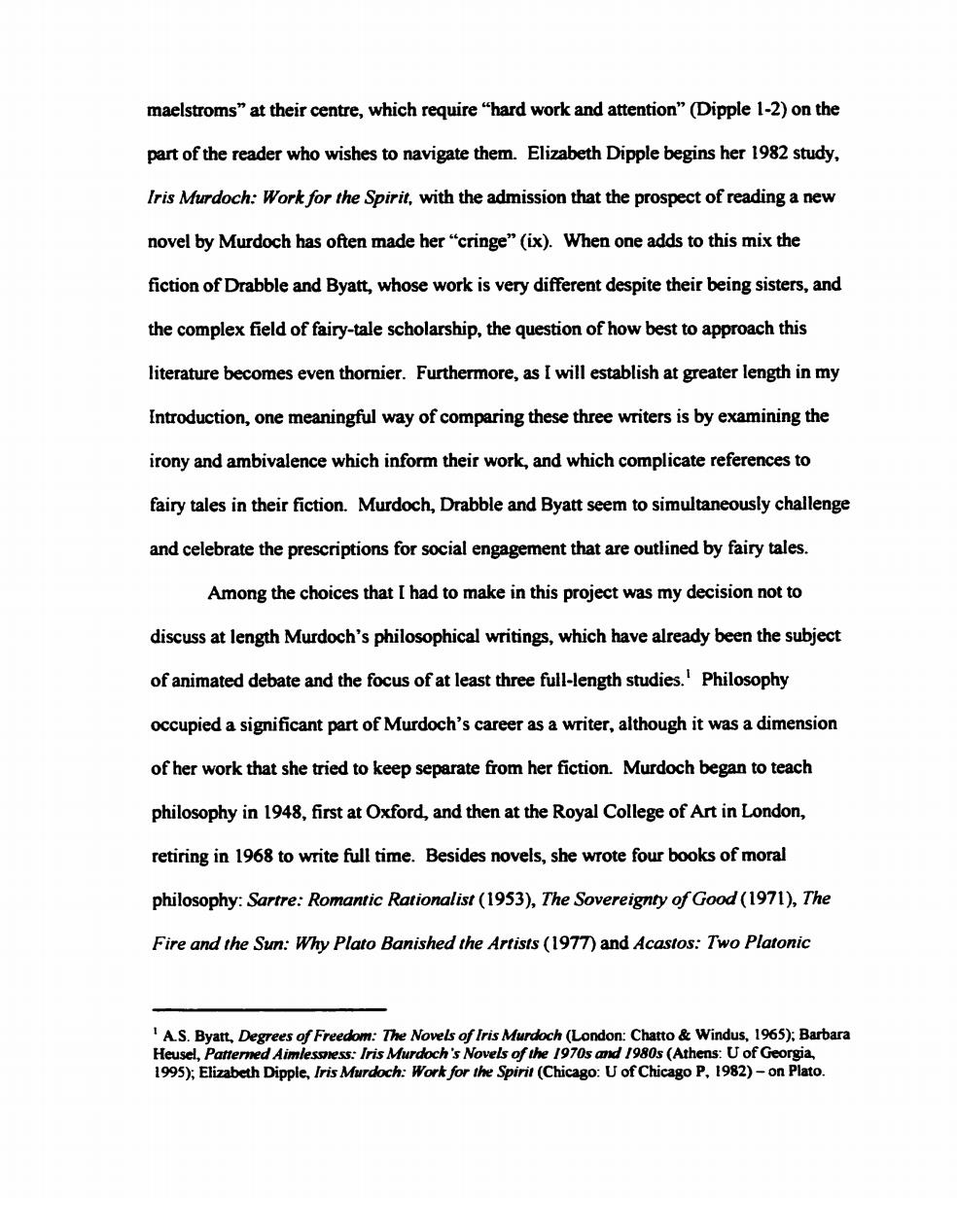正在加载图片...

maelstroms"at their centre,which require"hard work and attention"(Dipple 1-2)on the part of the reader who wishes to navigate them.Elizabeth Dipple begins her 1982 study Iris Murdoch:Work for the Spirit,with the admission that the prospect of reading a new novel by Murdoch has often made her"cringe"(ix).When one adds to this mix the fiction of Drabble and Byatt,whose work is very different despite their being sisters,and the complex field of fairy-tale scholarship,the question of how best to approach this literature becomes even thornier.Furthermore,as I will establish at greater length in my Introduction,one meaningful way of comparing these three writers is by examining the irony and ambivalence which inform their work,and which complicate references to fairy tales in their fiction.Murdoch,Drabble and Byatt seem to simultaneously challenge and celebrate the prescriptions for social engagement that are outlined by fairy tales. Among the choices that I had to make in this project was my decision not to discuss at length Murdoch's philosophical writings,which have already been the subject of animated debate and the focus of at least three full-length studies.Philosophy occupied a significant part of Murdoch's career as a writer,although it was a dimension of her work that she tried to keep separate from her fiction.Murdoch began to teach philosophy in 1948,first at Oxford,and then at the Royal College of Art in London, retiring in 1968 to write full time.Besides novels,she wrote four books of moral philosophy:Sartre:Romantic Rationalist(1953),The Sovereignty of Good(1971),The Fire and the Sun:Why Plato Banished the Artists (1977)and Acastos:Two Platonic A.S.Byatt,Degrees of Freedom:The Novels of Iris Murdoch (London:Chatto Windus,1965):Barbara Heusel,Patterned Aimlessness:Iris Murdoch's Novels of the 1970s and 1980s (Athens:U of Georgia, 1995);Elizabeth Dipple,Iris Murdoch:Work for the Spirit (Chicago:U of Chicago P.1982)-on Plato